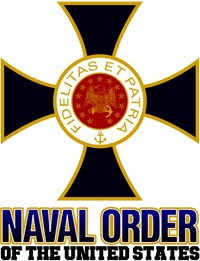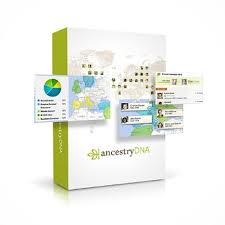News & Tall Tales. 1800s.

Chinese Interpreters in San Francisco
° Chinese in San Francisco ° Chinese Interpreters ° Anti-Coolie Tax ° Chinese Merchants ° Buddhist Temple 1856 ° Little Pete ° Opium (China, Europe, North America)
May 8, 1880, Daily Alta California, San Francisco, California, U.S.A.
EVIDENCE IN A CRIMINAL CASE

A Chinaman was convicted of perjury on testimony showing that his evidence in a criminal case before an examining magistrate, was in direct conflict with that given afterward at the jury trial. His evidence before the magistrate was proved by the official short-hand reporter, who took it down as interpreted; and a verdict of guilty was returned. The Chinaman appealed, on the ground that the reporter's notes were hearsay, and should have been verified at the trial for perjury by the interpreter, or some other witness who understood Chinese, who could then have been subjected to cross-examination. The Supreme Court sustained this objection, and reversed the judgment of conviction.
December 7, 1883, Daily Alta California, San Francisco, California, U.S.A.
CHINESE INTERPRETERS
Enforcement of the Restriction Act Place at their Mercy
It is positively affirmed that a reward has been offered for the life of the Chinese interpreter, Fon Sing, and that the lives of his wife and children have also been threatened. No other cause for this public defiance of law can be assigned, than the fact that Fon Sing told the truth in one case, and promised to continue to do so. The Court Interpreter, Moy Non, has officiated in numerous cases, but none of his countrymen have sought to molest him. It is a very pretty riddle to solve, and is, to say the least of it, rather suggestive. The Court Interpreter is armed with unlimited power for evil, and it certainly behooves the authorities to leave no stone unturned to replace him with a white man.
In several cases where a Caucasian interpreter has been called in, his translations have been contradicted, his knowledge of the Chinese tongue ridiculed, and the Court thereby embarrassed. The Court is powerless to detect fraud in the books of Chinese firms, and is compelled to rely solely upon the translations of a Chinaman whose life would not be worth a nickel were he a stumbling block in the path of the Chinese firms. Those books are produced as evidence that the applicant for debarkation resided here formerly, and it rests altogether with the interpreter whether he gives the Court a true or a false reply. It is humiliating to the last degree to behold the administration of the law placed at the mercy of one whose every instinct despises it, and whose very existence depends upon his perjuring himself to thwart it.
January 13, 1884, Daily Alta California, San Francisco, California, U.S.A.
Circuit Court.
In the Circuit Court, yesterday morning, Ng Lin Chin was discharged on testimony of former residence. The case of Chow Yon Poy, against whom rests the charge of unlawful residence in the United States, was continued until 11 A.M. next Saturday, owing to the absence of Judge Hoffman. The defendant is in the custody of the Marshal, and is held upon an affidavit of Assistant District Attorney Carroll Cook.
Moy Jim Man, the Chinese interpreter for the United States Courts, chaffed in a hamorous (cq.) way Attorney Graves, yesterday morning, concerning several cases which the lawyer had lost on the previous day.
Pacific Crossing: California Gold, Chinese Migration, and the Making of Hong Kong
During the nineteenth century, tens of thousands of Chinese men and women crossed the Pacific to work, trade, and settle in California. Drawn by the gold rush, they brought with them skills and goods and a view of the world that, though still Chinese, was transformed by their long journeys back and forth. They in turn transformed Hong Kong, their main point of embarkation, from a struggling, infant colony into a prosperous, international port and the cultural center of a far-ranging Chinese diaspora.
Making use of extensive research in archives around the world, Pacific Crossing charts the rise of Chinese Gold Mountain firms engaged in all kinds of trans-Pacific trade, especially the lucrative export of prepared opium and other luxury goods. Challenging the traditional view that this migration was primarily a "coolie trade," Elizabeth Sinn uncovers leadership and agency among the many Chinese who made the crossing. In presenting Hong Kong as an "in-between place" of repeated journeys and continuous movement, Sinn also offers a fresh view of the British colony and a new paradigm for migration studies.

Guenter B. Risse
A thoroughly researched, nuanced analysis of events surrounding the outbreak of bubonic plague in San Francisco from 1900 to 1904 by a well-known historian of medicine and a long-time resident of San Francsico. Risse's book is a significant addition to understanding of the issue.
Chinese Medicine and Healing: An Illustrated History
TJ Hinrichs
Chinese San Francisco, 1850-1943: A Trans-Pacific Community (Asian America)
Yong Chen
San Francisco Chinatown: A Guide to Its History and Architecture
Philip P. Choy

Richard H. Dillon
The Earthquake of 1906 that leveled and burned Chinatown changed the face of the opium dens, whorehouses, and gang meeting houses run by "hatchet men" that had marked the Chinese quarter of the city since 1852. When Chinatown was rebuilt, it was by American-Chinese who had different interests and wanted to stabilize their community.
The Chinese in San Francisco A Pictorial History
Laverne Mau Dicker
At America's Gates: Chinese Immigration during the Exclusion Era, 1882-1943
Erika Lee
Scholarly substance wrapped up in a well organized, clearly written package. The single most useful book on the history of Chinese exclusion. The strongest, best grounded, and most persuasive assessment of the long historical shadow Chinese exclusion has cast over the development of American immigration policy. It deserves a wide readership.--Journal of Social History
The Chinatown War: Chinese Los Angeles and the Massacre of 1871
Scott Zesch
The Children of Chinatown: Growing Up Chinese American in San Francisco, 1850-1920
Wendy Rouse Jorae

Author Benson Tong explores the lives of Chinese girls and women who were shipped to San Francisco in the nineteenth century and forced into prostitution. They maintained their will to alter their fate, survived subjugation, and quite often escaped to establish families in the American West.
The Poker Bride: The First Chinese in the Wild West
Christopher Corbett

Michael Pollak's research on Chinese Jews is well documented. Beyond the confines of Jewish history, this saga sheds much light on China's past and its treatment of minorities. The new edition includes a preface that evaluates data that have come to the fore with regard to the once flourishing Jewish communities of old China, particularly that of Kaifeng. Numerous illustrations.

The Naval Order of the United States has a history dating from 1890. Membership includes a wide range of individuals, many with highly distinguished career paths.
The San Francisco Commandery meets the first Monday of each month at the San Francisco Italian Athletic Club in San Francisco, California and holds two formal dinners each year.



 Copyright ~ 1998-2018.
Copyright ~ 1998-2018. 